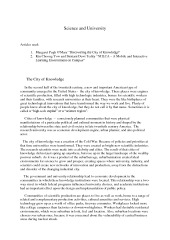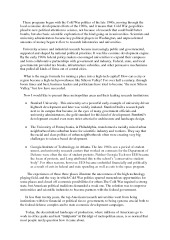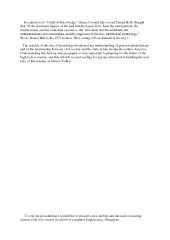Science And University



Science and University.
The city of knowledge was a creation of the Cold War. Because of policies and priorities at that time universities were transformed. They were created as bright new scientific industries. The research scientists were made into a celebrity and elites. The result of that cities of knowledge did not just spring up anywhere, but rose up in the larger landscape of the wealthy postwar suburb. As it was a product of the suburban age, suburbanization created ideal environments for science to grow and prosper, creating spaces where university, industry, and scientist could create new networks of innovation and production, away from the distractions and disorder of the changing industrial city.
Communities of scientific production are places to live as well as work, home to a range of related and complementary production activities, cultural amenities and services. High technology grew up as a world of office parks, freeway commutes. Workplaces looked more like college campuses than factories or downtown highrises. Workers had desirable residental environments, which were suburban in look, feel and location. Also, suburban locations were chosen over urban ones, because it was concerned about the vulnerability of central business areas during nuclear attack.
These programs began with the Cold War politics of the late 1940s, moving through the local economic development efforts of the 1960s, and it means that: Cold War geopolitics plead to new political attention to science, not because of research that could build better bombs, but also basic scientific exploration of the kind going on in universities. Scientists and university administrators became key political players in Washington, and unprecedented amounts of money began to flow to research laboratories and universities.
University science and industrial research became increasingly public and governmental, supported and shaped by national political priorities. It was like econimc development engine. By the early 1960s federal policy makers encouraged universities to expand their campuses and form collaborative partnerships with government and industry. Federal, state, and local governments provided tax breaks, infrastructure subsidies, and other persuasive mechanisms that pulled all kinds of firms out of central cities.
















